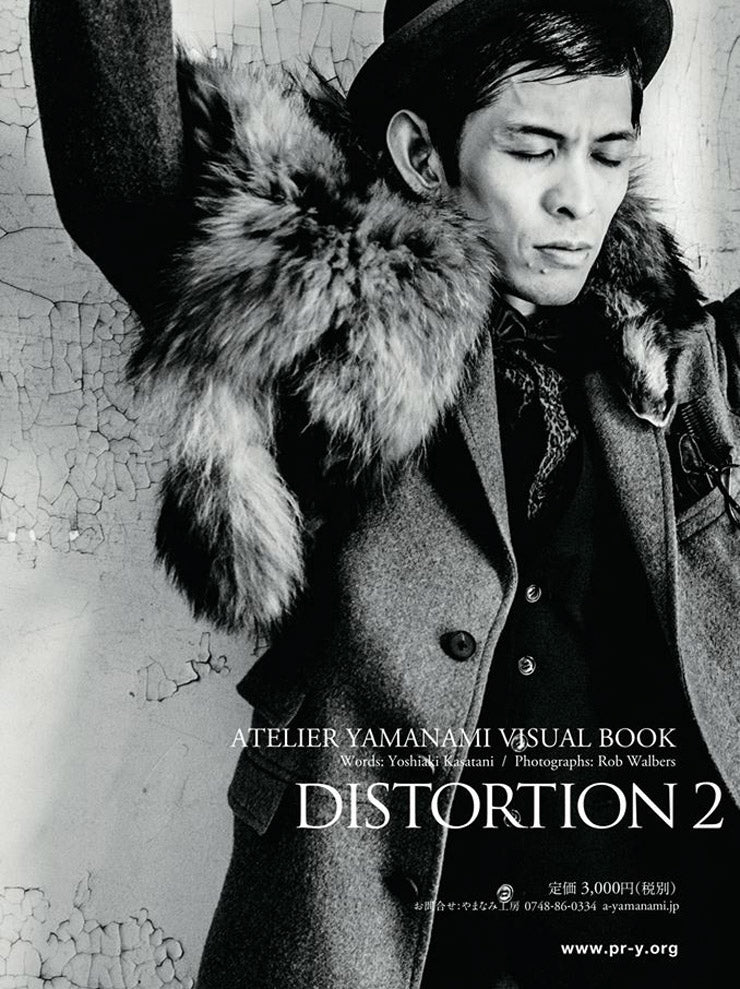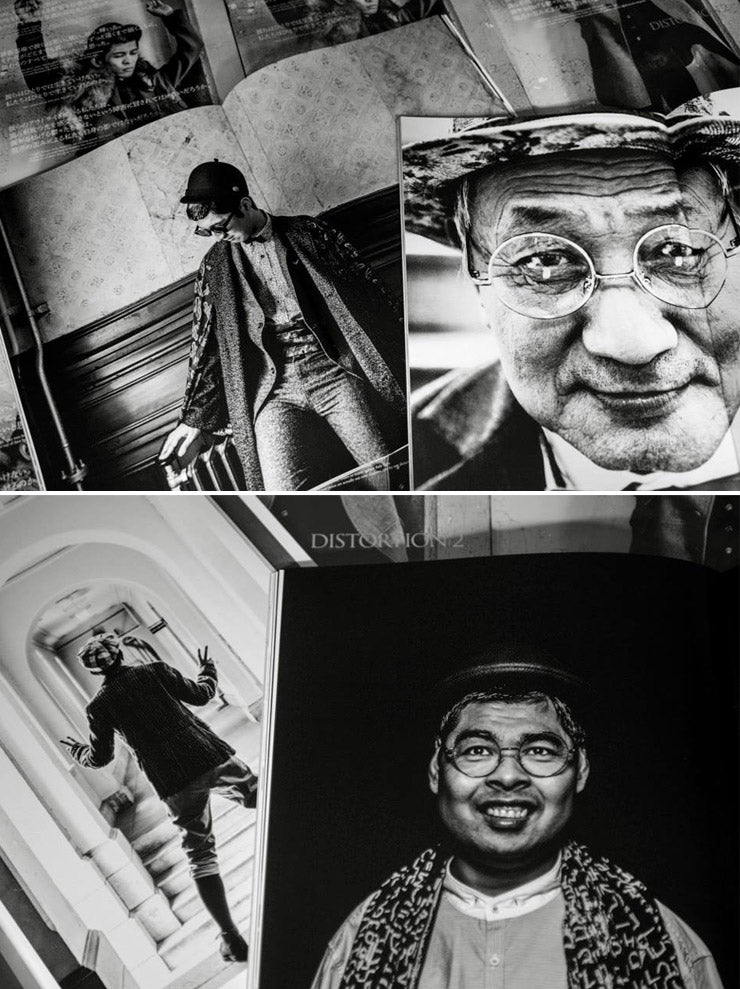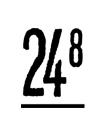

PR-y
Photo book “DISTORTION2”
A collection of portraits of people with intellectual disabilities and mental illnesses who attend Yamanami Kobo in Koka City, Shiga Prefecture.
Author = Keimi Kasaya (text) / Rob Walbers (photo)
Publisher = Kankazu Yamashita
Design = Mutsumi Suwa
Styling = Hiroei Hisuke
Hair and makeup = Asako Takeda
Translation = Reiko Wong
290×420mm 56 pages Monochrome (some color)
DISTORTION
There is a concept called Art Brut that was proposed by French artist Jean Dubuffet in the 1940s. A coined word meaning "art in its raw form," it refers to creations created on impulse from the roots of life by people who have not been poisoned by artistic culture. Dubuffet advocated that the motives for expression by people who are completely uninfluenced by established values and social conventions are extremely pure, and he strongly criticized existing artistic activities by so-called intellectuals, He advocated Art Brut as the absolute antithesis of authoritarianism. It was later translated into the English-speaking world by the British writer Roger Cardinal as Outsider Art , but art-related art objects to the confusion of the two names due to their difference from the original meaning of art brut. There are many people. Not only has the market matured in Europe and America, where they are bought and sold at high prices and specialized journals are distributed, but research is still underway in various fields such as psychiatry and philosophy.
On the other hand, in Japan, there is a strong tendency for the concept to be recognized as "art brut = art for people with disabilities", mainly due to the view that creations by people with intellectual disabilities fall under this concept, and art brut is aimed at welfare for people with disabilities. Awareness and dissemination activities are outstanding. However, art brut is a concept based on the attributes of the product, which values ``the purity of expression because it is not dominated by tradition or fashion'' as a consideration from an artistic perspective; The focus is not on whether it is a creative act by a person. In other words, Art Brut is a concept that has nothing to do with the welfare of the people involved.
Furthermore, there is constant debate over the pros and cons of categorizing creations by people with disabilities as "art brut" and over the term "outsider art." This is probably because they take on completely different meanings depending on the viewpoints and contexts from various standpoints, and even the right and wrong, right and wrong, are reversed. However, in this field, authors do not claim that their creations are Art Brut, nor do they consider themselves outsiders. These disputes are always waged between people other than the parties involved. The reality is that the categorization standards set by those involved in the art world and the ethical views proposed by those involved in welfare are often at issue, and that various commercial and political strategies are intricately intertwined.
Under such circumstances, can the talent of those involved be fairly evaluated? At the moment when a person encounters an excellent work of art and is moved, there is no room for prejudice, discrimination, or compassion towards the artist to intervene, and no matter how noble the theories of scholars and experts, they have no influence whatsoever. It should not have. Isn't it important to create a place where many people can freely appreciate their creations, without being bound by the theories of the art world or the shackles of the welfare world, much less controlled by political power?
Among the works created by people with intellectual disabilities, there are many free and innovative expressions that are not bound by preconceived notions. However, it is nearly impossible for them to announce this to the world on their own. Just as Art Brut was established through strategic promotion by an artistically educated person named Dubuffet, who was fascinated by the creations of people who were not poisoned by artistic culture, in modern society specialists in various fields are actively promoting the art. By involving and collaborating with people with intellectual disabilities in their creations, their opportunities will expand and this will lead to the creation of new value.
The negative problems surrounding people with intellectual disabilities are not due to their uniqueness, but are nothing but social distortions created by their periphery. They make us aware of who is affected by such distortions, and what is lost. My purpose is not to study art brut or pursue the ethics surrounding people with disabilities, but to convey the charm of their creations to as many people as possible, and at the same time, to discuss disabilities that are often neglected in our lives. We need to refocus our attention on the existence of people, devise a multifaceted strategy to coexist with them, and put it into practice. This is by no means presumptuous, such as supporting people with disabilities, but simply an act of confronting our latent distortions and reexamining ourselves.
Keimi Kasaya (RISSI INC.)
Choose options


Photo book “DISTORTION2”

